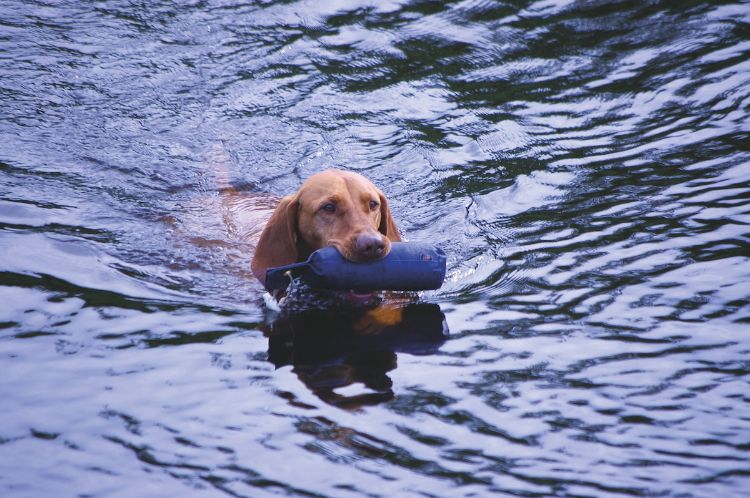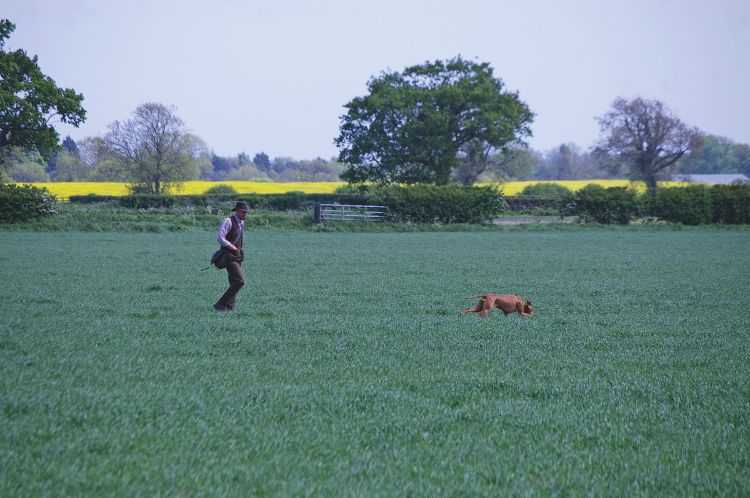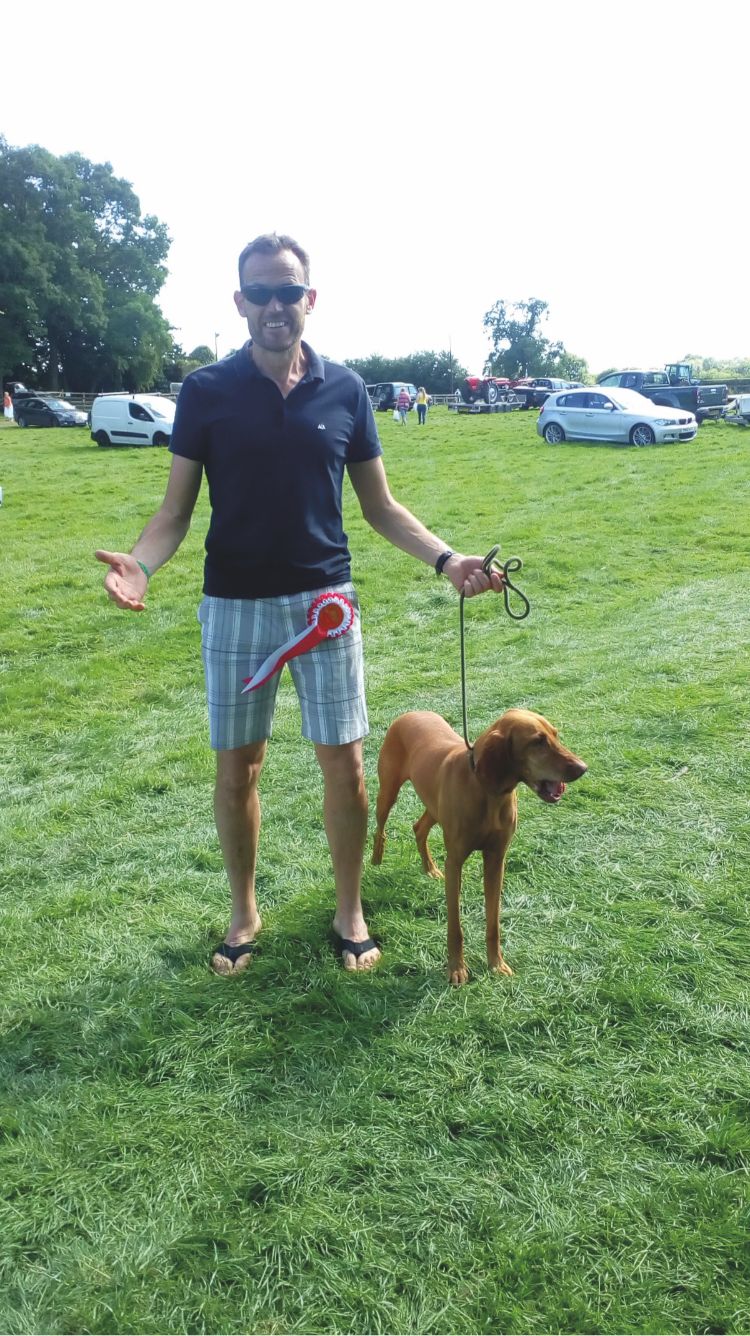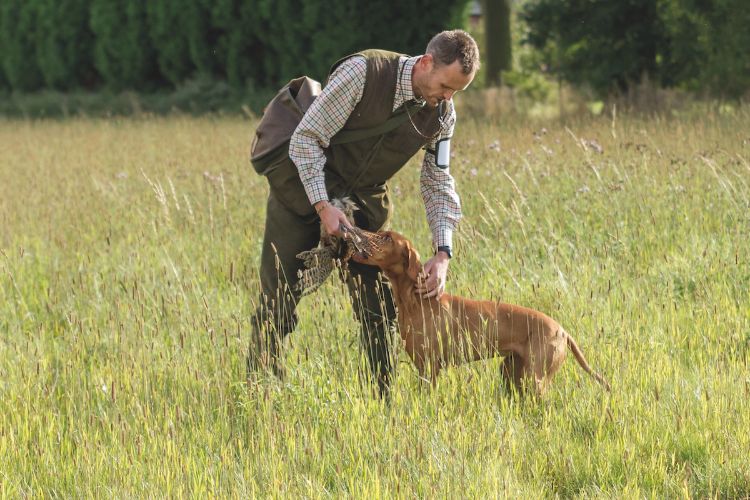Ten years ago I ran Molly, our Hungarian vizsla, in an All-Aged Field Trial near Settle, North Yorkshire. She came third. She was the top dog on the day, but as is often the case in Field Trials for the Hunt Point Retrieve group, not every trial produces a first place, or even a second. The most recent HPR Field Trial I attended (as a spectator) was on the Glorious Twelfth in 2022 – an Open stake where out of 12 dogs running, the only dog to pick up an award on the day was a German shorthaired pointer, which was presented with fourth place. It’s down to the judges to decide what place that dog merits, based on its performance as a whole. There are many elements on the day of a trial which can influence a dog’s display and whether or not it will get the opportunity to demonstrate the breadth of its talent; subsequently determining how the final placings are laid out. These elements include game supply, the weather, suitable hunting ground, adequate cover and let’s not forget a major component to take into account: the actual quality of the dogs that are taking part!
 Lowering your expectations can be hard - but enjoying those everyday training moments is still more than worth it for the joy our dogs give us
Lowering your expectations can be hard - but enjoying those everyday training moments is still more than worth it for the joy our dogs give us
Peak performance?
I was happy with Molly’s third that day. In fact, it was her highest ever award in a Field Trial. I think she picked-up four Field Trial awards that season, and that was enough to earn her the award of top trialling vizsla for that season, from the Hungarian Vizsla Society. Soon after that, I stopped trialling her. She was just five years old. Why did I stop? Well, on that day, it was as good as I’d seen her run during her training. It was, in my mind, as good as she was going to get. She had also started to become trial-wise, where she knew the trialling set-up and she was anticipating the whole situation, sometimes resulting in running-in.
 Memories of training Molly in the fields close to home make Ryan smile more than the trialling awards
Memories of training Molly in the fields close to home make Ryan smile more than the trialling awards
Even if I were to have trained her out of that, whining had started to become a real issue and this annoying problem increased in volume on shoot days and continued right up until the day she die
Indeed, the nuances of her breed made for some pretty hard work and, frankly, inconsistent performances. She loved to invent new faults, on what sometimes felt like an almost weekly basis! She’d ran in enough trials where luck had come her way and she’d been given enough chances to prove herself. In short, she’d peaked! I’d not put that much work into a dog before her, or since.
She was a rescue dog with a bit of an attitude; she taught me a great deal about the breed as she tested my patience and resilience to the limit. On reflection, and in the grand scheme of things, she showed some flair and some brilliance, albeit too infrequently.
It perhaps seems that I’m being unfair, but although Molly was very good in comparison to other vizslas competing at the time, she lacked the holistic package and reliability to go any further in competition. Becoming a Field Trial champion or even winning an Open stake was, in my view, beyond her capabilities. I don’t want to knock her achievements but to have continued with her trialling career I feel would ultimately have become progressively less fruitful. I believed she had reached the limit of her talent. Or perhaps I’d reached the limit of mine with her!
 Molly and Ryan win 'Best Six Legs' at the local agricultural show
Molly and Ryan win 'Best Six Legs' at the local agricultural show
Great expectations
I have some very competitive customers who take their training very seriously. Often their ambition is to arrive at their end goal as quickly as possible, whether that be beating, picking-up, rough shooting or competing; or a combination of any of these working tasks. They see the vision clearly, and they’re certain they’re going to get there no matter what obstacles pop up.
I’m equally driven to help them and I admire their enthusiasm. However, without trying to quash their eagerness, I sometimes find it hard to explain to them that, although ambition and goals are a necessity, there are also many factors beyond their control that may interrupt those dreams.
I understand this sounds a little ‘glass half empty’, but anyone who’s trained a gundog to a good standard knows that the route may, on occasion, be far from straightforward. A new problem can pop up, just when you think you’ve got all the bases covered and every aspect is sorted. Most issues for the mainstream breeds can be overcome, yet sometimes – despite everything else falling into line and all the above factors in place or moving along nicely – there’s one component that’s understandably often hard to acknowledge or accept, and that’s the possibility that their dog is simply not good enough for their aim.
 Molly delivers to hand at a Field Trial
Molly delivers to hand at a Field Trial
Not making the grade
What can be frustrating from a teaching point of view is when I can see all the ingredients are there for success. I see a handler with dogmanship and consistency when delivering methods, with access to perfect training ground in order to aid progression at a quicker rate. I see an owner so intent on getting everything right that it becomes their all-consuming pastime.
But when I also see that their dog simply doesn’t have the natural ability required to live up to the handler’s expectations, we arrive at a very difficult conversation that no owner really wants to hear. And why would they? Surely there’s no reason why their dog, that they train so hard with, that they love and adore, feed the best food to, and provide the comfiest bed to, shouldn’t make it all the way to achieving that goal they set out?
We’re lucky here at Farlavale, we have some very talented dogs. But we also have the odd dog that is pretty untalented! I’ve often thought: ‘what if one of these was my only dog?’ I’d be in the same situation as the enthusiastic customer, whose aspirations are higher than the dog’s capabilities.
So, somewhere along the training journey, we’ll have a conversation about trying to make the dog the best it can be, and being happy with that. Because if we try to go beyond that, the enjoyment starts to fade for everyone as the training successes become fewer and far between.
Weighing it all up
I try to help customers arrive at a decision when it comes to enjoying their dog, by asking what’s most important to them. I’m always advocating to those starting out or even to those who’ve been at it a few years: enjoy the journey, It’s usually the best part.
Those people keen to have a well-trained dog have the right idea and I most certainly think everyone should aspire to that, but to get things into perspective – for many owners, we could just be talking about enjoying 10 days a year through the shooting season on a small syndicate shoot, maybe coupled with a bit of pigeon decoying in the spring or autumn months. What about the other 350+ days? If a chunk of that is made up of regular training, then great, but don’t forget to enjoy that part too.
I had a customer once that wanted a welltrained dog for his shoot days. This chap also owned an amount of land and loved his daily walks through his fields and along the boundaries. It was all fenced in, and of course it held a small population of the local wildlife, including rabbits, partridge and the odd pheasant. Here he would switch off, pop his hands in his pockets and let his spaniel run about, which subsequently ended with a regular chase or two. I presented him with the choice: 10 days shooting or 355 days walking freely around his land?
He understood that for there to be any chance of a stress-free shoot day, where he could enjoy some nice in-control dog work, that the relaxing walks where the dog ran wild would have to stop. He chose the walks. It was his land and his prerogative. He simply chose what gave him the most enjoyment!
Enjoying the journey
Returning to my vizsla… I remember quartering Molly in the fields close to home, across the winter wheat or rape in the spring, hoping that a pair of partridge had sat tight, enabling her to get a ‘point’. Those training memories make me smile more than that third place in the trial. I remember beating with her on our favourite shoot and how efficiently she hunted and covered the kale. I remember winning ‘Best Six Legs’ with her at a local agricultural event in the fun dog show.
I enjoyed the trialling with her, but I enjoyed the journey with her best of all. I knew that Molly wasn’t good enough to go further, I knew she’d had her success and her luck that day. There were better dogs that finished behind her, including Adrian Blackledge’s HWV that went onto become a Field Trial champion and also win the HPR Championship.
I was satisfied that I’d made Molly as good as I could make her. There was nothing left of that trialling journey. I’ll be honest, I didn’t quite arrive at the decision to stop trialling her instantly after that third place. I too needed to adjust my expectations over a period of time and slowly remove the rose-tinted glasses.
I can look back now, however, knowing that she lived her best life: a much loved part of our family, a beating dog and constant companion. Not too bad for a rescue dog who’d had a far from ideal start in life.